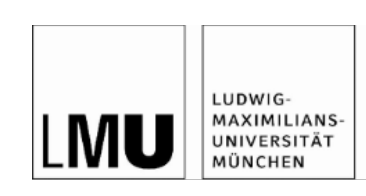
Flowers are far less innocent than bridal bouquets and Mother’s Day kitsch might suggest. For Alice Walker, the elaborate floral arrangements that her mother used to adorn even the shabbiest houses with symbolize not only comfort and hope despite poverty, but the creative potential of a generation of Black women who were denied other access to art, culture, and self-realization.1 Culturally and historically, flower picking is connoted with human power over nature, yet it also glosses over sexual violence, colonial fantasies of discovery, and anthropocentric delusions of grandeur. In ancient myths and wedding rituals, young girls are abducted and raped while gathering flowers;2 the symbolically charged breaking of flowers anticipates defloration. Most recently, the fact that Goethe’s folk poem “Heidenröslein” identifies a rape victim with a broken rose came under literal attack in the wake of a #MeToo-inspired campaign when the art collective Frankfurter Hauptschule threw toilet paper at the Goethe House in Weimar in the summer of 2019 to denounce the flowery euphemism.3 On colonial expeditions, botanists collected important plant knowledge, but the exotic objects unknown in Europe were also exported, classified, and monetized; this imperialist gesture still resonates in the term “plant hunter.”4 The poetry of symbolism, impressionism, and modernity seized the fascination for orchids, lilies, and azaleas.5 However, even today, tropical flowers are still a status symbol, as evidenced by the “PlantParenting” trend on social media platforms that has flourished during the Covid pandemic.6 Neo-baroque, floral book formats—anthologies, florilegia, herbaria—enjoy renewed popularity in times of climate crisis: in contemporary artistic plant collections, the need for order and explanation meets subversive critique of Western, anthropocentric exploitation of nature,7 while voices in philosophy, literary, and cultural studies aspire to re-establish the herbarium as a text genre for the humanities that meets critical and posthumanist demands more effectively than the individualistic monograph.8
The graduate conference invites junior scholars (doctoral candidates, postdocs, early career researchers) to explore the literary, cultural, and philosophical implications of flowers, following the vegetal turn in the humanities.9 Seeking an interdisciplinary dialogue between literary and cultural studies, we welcome research from collaborative fields such as gender studies, ecocriticism, ecofeminism, postcolonial/decolonial studies, critical plant studies, posthumanities, and environmental humanities.
Confirmed Keynote Speakers: Isabel Kranz and Thassilo Franke.
Possible objects of investigation and perspectives may include (but are not limited to):
The ornamental, the decorative, and the symbolic: bouquets, boutonnières, floral decorations, “Wear Flowers in Your Hair,” floral language, codes of conduct, kitsch.
Erotics of picking flowers: floral sexual symbolism, myths of defloration, flowery euphemisms, violent removal of versus seduction through a dangerous flower, floral scents as aphrodisiacs.
Floral exoticism: postcolonial perspectives on imperialist plant hunting, rarities, flower picking as a gesture of dominance and appropriation of the foreign.
Anthropocentric exploitation and subjugation of “inanimate” nature.
New Nature Writing between nature romanticism, conservationism, and ecocriticism.
Subordination through classification: herbaria, plant catalogs, nomenclatures—along with their creative and critical deconstruction.
Vanitas / memento mori: ephemeral beauty, withering and death of picked flowers.
Poetological dimension of flowers: “Blue Flower,” vegetal imagery and metaphors, courtly love versus modernism, “flowery” rhetoric, synesthesia, mimesis of nature.
—
Abstracts for twenty-minute presentations in English or German of approximately 300 words (selective bibliography excluded) combined with a brief biographical note should be sent to: flower-power@germanistik.uni-muenchen.de by December 31, 2022.
The conference is organized by the Class of Literature of the Graduate School Language & Literature Munich and will take place from 11–13 May 2023 at LMU Munich.
—
Organizers:
Qingyu Cai, Manuel Fingado, Martin Marius Kuhn, Angelina Maslennikova, Carole Martin, Hannes Mittermaier, Sophie Emilia Seidler.
1 Walker, Alice. “In Search of Our Mothers’ Gardens.” 1972. Within the Circle: An Anthology of African American Literary Criticism from the Harlem Renaissance to the Present, edited by Angelyn Mitchell, Duke UP, 1994, p. 408.
2 Goody, Jack. The Culture of Flowers. Cambridge UP, 1993; Richardson, Nicholas J. The Homeric Hymn to Demeter. Clarendon Press, 1974, p. 140.
3 “Frankfurter Hauptschule – LOLita.” YouTube, uploaded by Frankfurter Hauptschule, 21 Aug. 2019, https://www.youtube.com/watch?v=anmhpdj8X6I.
4 Whittle, Tyler. The Plant Hunters. Heinemann, 1970; Hücking, Renate. Die Beute der Pflanzenjäger: Von Europa bis ans südliche Ende der Welt. Piper, 2010.
5 Baudelaire, Eliot, Rilke, and other contemporaries come to mind.
6 In her photographic juxtapositions, artist Julia Löffler illustrates similarities between colonialist fascination with the tropics of the nineteenth century and present-day stagings of proud “plant parents.” See also the exhibition announcement: Exotic Plant Hunters. 31 Mar.–6 June 2022, Stadthaus Ulm https://stadthaus.ulm.de/julia-loeffler-exotic-plant-hunters; interview with the artist: Löffler, Julia. “Die Pflanzen sind definitiv Statussymbole.” Interview by Franziska Peil. Monopol, 10 Mar. 2021, https://www.monopol-magazin.de/interview-exotic-plant-hunters-julia-loef....
7 For example, the catalogue of artificial ornamental plants Herbario de plantas artificiales by Colombian multimedia artist Alberto Baraya (continuously updated since 2003), http://laboralcentrodearte.org:7080/laboral/es/recursos/obras/herbario.
8 Kranz, Isabel. Sprechende Blumen: Ein ABC der Pflanzensprache. Matthes & Seitz Berlin, 2014; Coccia, Emanuele. The Life of Plants: A Metaphysics of Mixture. 2016. Translated by Dylan J. Montanari, Polity, 2019; Marder, Michael. The Philosopher’s Plant: An Intellectual Herbarium. Drawings by Mathilde Roussel, Columbia UP, 2014; Braidotti, Rosi. The Posthuman. Polity, 2013.
9 Schwan, Alexander, et al., editors. Floriographie: Die Sprachen der Blumen. Fink, 2016; Laist, Randy, editor. Plants and Literature: Essays in Critical Plant Studies. Brill, 2013; Woodward, Wendy, and Erika Lemmer. “Introduction: Critical Plant Studies.” Journal of Literary Studies, vol. 35, no. 4, Oct. 2019, pp. 23–27.